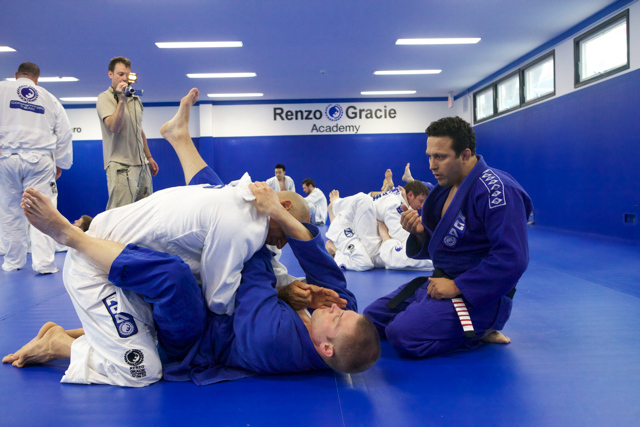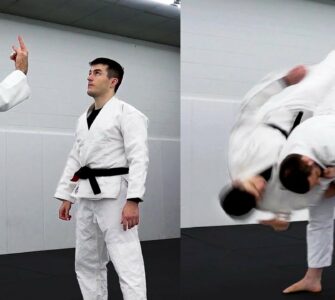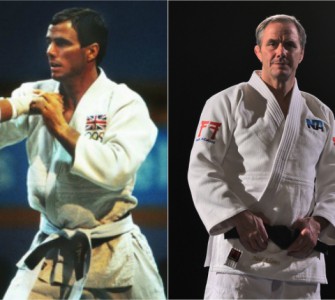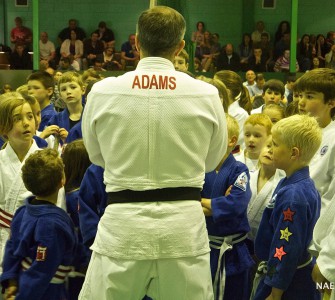Written by Sportscientist Maciel Welko, Luta Livre instructor at http://www.lutalivre-academy.de/. A longer and more detailed version will be addressed in the book of the author of this article “Teaching and learning Luta Livre”.
Introduction
Teaching competencies in general are neither a simple nor natural skill that one attains based solely on their level skill as a combat athlete. Teaching and fighting are two distinct disciplines and although you might be a good fighter, you can’t take for granted that your teaching skills are as well developed as your fighting skills. Teaching and fighting are absolutely not the same and competent teaching has to be learned. The requirement profile of an Instructor is multi-faceted. This short article intends to focus on the topic on differentiated instruction without going into all of the details. It should merely highlight one aspect of differentiation in teaching tasks.
What does differentiated instruction mean and what is this good for?
The basic idea of differentiation in your teaching tasks is based on the fact that your students could have a wide range of knowledge or skill levels in a single class group. Teachers and trainers who do not differentiate their teaching are limiting the learning of many of their students and athletes. Student’s frustration and feelings of over or under challenging are guaranteed in the short and long term. You do not want to be known as one of these teachers, right? Then differentiated instruction is needed in order to maximize the learning process of your students. It can be carried out by the organization of your class and the day’s lessons. Differentiation is integral if you as instructor or trainer want to achieve the best potential of your students or athletes and in a heterogeneous training group with a large number of participants this could be a very difficult task. However, the use of specific pedagogical and didactical alternatives as a support to your teaching activities and resources is not only a clever and wise strategy, but also a well evaluated and studied topic in the field of educational scientific research. Such interventions also support student’s individual learning, the development of self-analysis and reflection skills and can create a better comprehension for them about the intention of your teaching and goals.
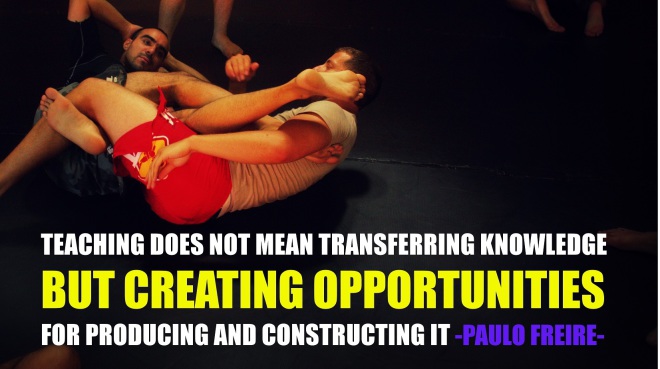
But how to put this under praxis?
First of all you need to understand that differentiated instruction strategies involve creating a learning environment in which you can control the process of the pre-planned content, goals and objectives of your daily lesson.
As a Trainer or Instructor you can change some of your class structures and strategies in such way that the techniques shown are still the same for all athletes or students but the outcomes according to the skills level of them follow different instructional goals. In order to do this efficiently and successfully, knowing each of your student’s and athlete’s skills and needs become vital. For example, if today’s teaching aim is to set up an Armbar from Guard, then the same Armbar can be extended and differentiated by adding or adjusting more details and tactical advice for your higher skilled students. Differentiation teaching also means to understand and react to the needs of your advanced, intermediate and beginner students. The success or failure of a class lesson depends largely on the adopted teaching method by the trainer. In this Armbar from Guard example all of your students have the same content but with differentiated goals and at the same time you protect your students from being under or over challenged. Summarized in a sentence, this means meeting your students first at their knowledge level to set further steps through instructional modification for a multilevel group.
Just for a clearer understanding I will try to explain it with the aid of a mathematical example. Let’s say your today’s lesson is how to add numbers. For your beginners (white belt) you should teach 1+1, probably the very easiest addition. If some students (blue belt) who are present and already have learned how to add 1+1, then they probably are going to be under challenged with this lesson. Here you can make a differentiated instruction by teaching them how to add 12+12; for a more skilled (purple belt) you teach them, for example, how to add 123+12+12, for a brown belt you show 123+123+12; a black belt can try 123+123+123 and so on. Now try to imagine what could happen if you teach (not differentiated) how to add 999+999+999+999 or the other extreme 1+1 for everyone attending today’s class. In the differentiated mathematical example highlighted above, all of your students learned how to add numbers, but the outcomes for every one of them were different.
Conclusion
Through a differentiated instruction your students can access knowledge with a significantly major impact; they can increase the understanding of the art, develop and practice their own skills, progressing toward the next level in the shortest time as well. After class they experience personalized success and are therefore individually satisfied and willing to attend the next class and so on. They will understand what, how, when and why of each technique and tactical application. With an adequate differentiated instruction you as a teacher could be able to remove barriers to the learning-process and open the door to fast learning results. More importantly, you keep each of your students motivated and your teaching time and energy was not wasted or in vain.
For more information about promoting teaching competencies in grappling sport, please feel free to contact us.
Best wishes for successful teaching and learning!

